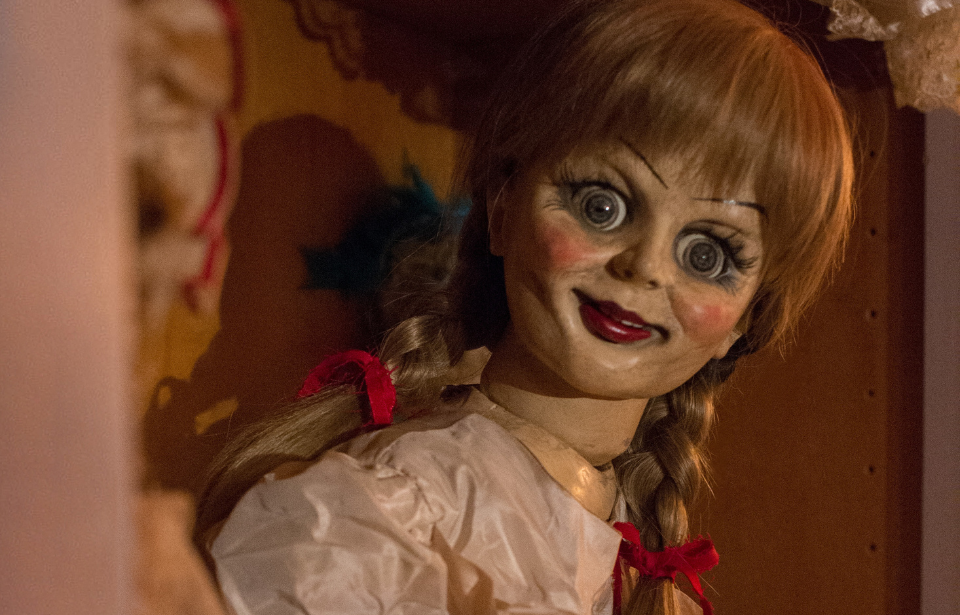The Annabelle doll has etched its spot as a cornerstone of paranormal Americana. From its humble beginnings as a mere child’s toy to becoming the centerpiece of chilling supernatural tales, Annabelle’s legacy continues to fascinate and frighten. As we delve into the history of this notorious doll, we uncover a narrative that blurs the line between fact and fiction.
Unraveling the history behind the Annabelle Doll’s sinister reputation
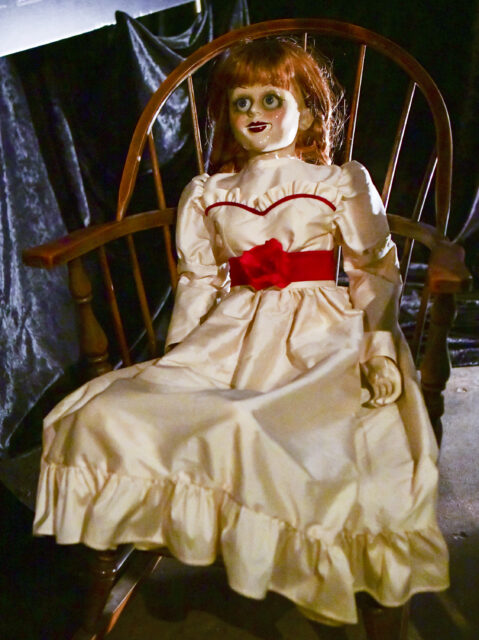
The story of the Annabelle doll is as rich in mystery as it is in fright. Originally, it was nothing more than a Raggedy Ann doll – a popular children’s toy that had a red yarn mane and a triangular nose. However, in the 1970s, this seemingly innocuous plaything became the center of a supernatural saga that captivated paranormal enthusiasts and terrified the public.
It’s important to distinguish between the real Annabelle doll and its Hollywood counterpart. The true Annabelle is a far cry from the porcelain figure depicted in the movies. Given as a birthday gift, the real toy became entangled within a narrative of demonic possession and haunting after its recipients reported strange occurrences, which wound up catching the attention of paranormal investigators Ed and Lorraine Warren.
Involvement of Ed and Lorraine Warren
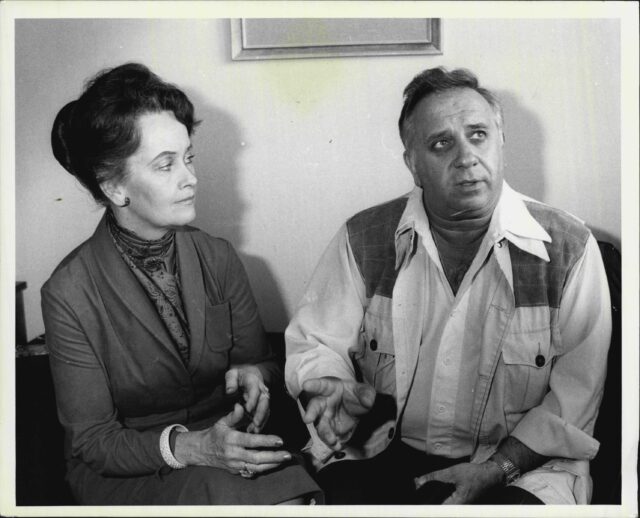
The story of the Annabelle doll is inextricably linked with the Warrens. Ed, a World War II veteran, and Lorraine, a self-professed clairvoyant, were pioneers in the field of paranormal investigation. They primarily focused on working with families who reached out to them after experiencing unexplained phenomena. Among those they worked with were the Perron Family (best known via The Conjuring franchise) and the Lutz family, who lived at The Amityville Horror house.
Their work with Annabelle, in particular, is one of their best-known cases, with the couple deeming the doll a conduit for a malevolent spirit. The pair’s intervention marked the beginning of Annabelle’s prominence in the world of the supernatural.
The Warrens’ Occult Museum in Connecticut once housed the doll, where it was encased in a glass box, allegedly to contain its malevolent energies. Visitors flocked to see Annabelle, now an artifact of paranormal curiosities and were often left with a sense of eerie unease. The museum served as a testament to the Warrens’ work, although it has since been closed to the public.
From Raggedy Ann to demonically possessed
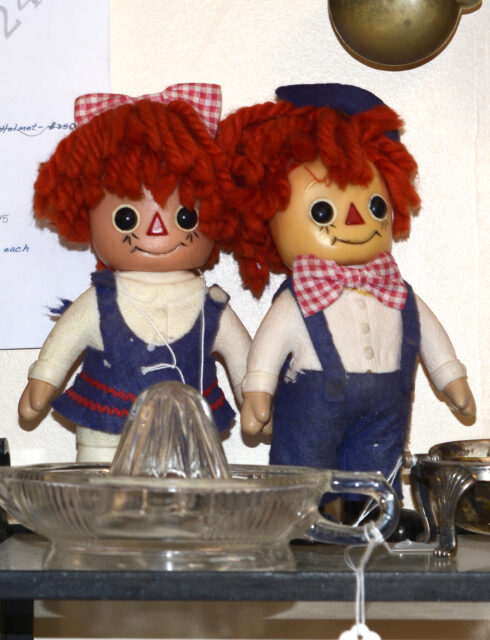
Over the years, the image of Annabelle has undergone a radical transformation. Originally perceived as a harmless child’s doll, the subsequent reports of sinister activities associated with it have reshaped its image into that of a haunted object. This change was solidified by the doll’s portrayal in The Conjuring, further perpetuating its eerie reputation.
Annabelle’s notoriety is built upon various documented accounts of paranormal activity. As per the Warrens’ account, Donna, a nursing student, noticed the doll’s subtle movements, along with her roommate, Angie. It then began shifting to different rooms, even kneeling on a chair, a pose it couldn’t hold when they tried.
Skeptics and psychologists have offered explanations for the Annabelle phenomenon as rooted in human psychology. From the power of suggestion to confirmation bias, there are theories that attempt to demystify the occurrences surrounding the doll.
How the Annabelle Doll became a horror icon in cinematic lore
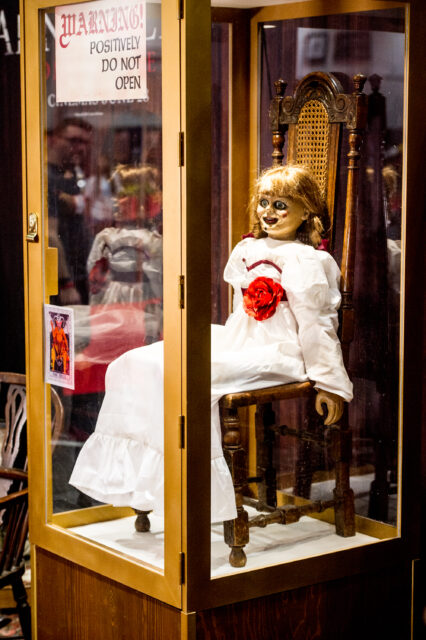
Hollywood has played a pivotal role in transforming the Annabelle doll from a purportedly haunted object into a global icon of horror. Its introduction in The Conjuring and subsequent titular films – Annabelle, Annabelle: Creation and Annabelle Comes Home – have cemented Annabelle’s place in the pantheon of horror figures, introducing the eerie legend to a wider audience.
These movies delved deeper into the doll’s sinister history and impact on unsuspecting victims, reaffirming its status within the horror genre.
Challenges and controversies in owning haunted artifacts
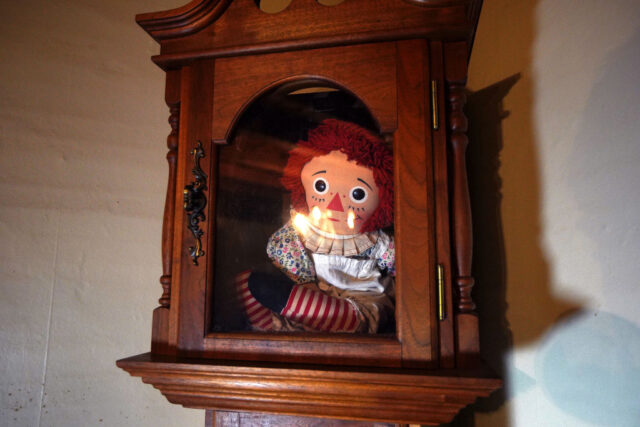
Collecting items like the Annabelle doll comes with its own set of challenges and ethical considerations. Issues range from the potential supernatural dangers to the moral implications of commodifying objects associated with dark histories. These factors contribute to the complex narrative that surrounds the possession and display of haunted artifacts.
More from us: The Villisca Ax Murders Remain Unsolved Over a Century After They Were Committed
Even today, the doll’s legacy endures, transcending its physical form to become a fixture in the collective psyche. It continues to produce fear and fascination, influencing pop culture, fueling paranormal investigations and serving as a cautionary tale about the unseen forces that may dwell within the most unsuspecting of objects.
